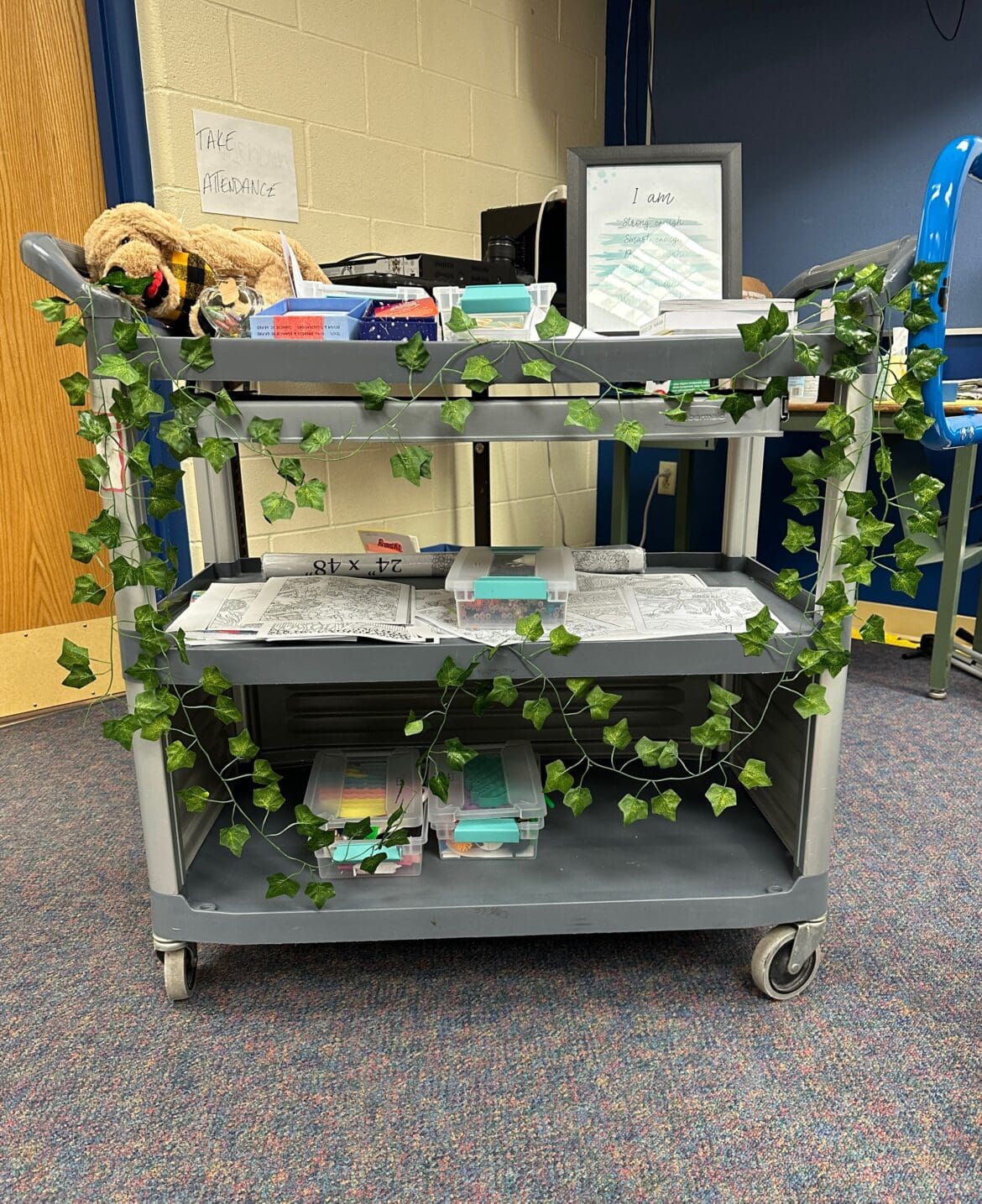Sophia Lanno and Camren Ray
eSomethin Staff
What is Peer-to-Peer (P2P)?
Many students have noticed a decorative cart that is traveling through their English classes. The cart carries “fidgets” which many teachers let students borrow to destress. But where did this cart come from?
Peer-to-Peer is a program created by the University of Michigan, specifically the Peer-to-Peer Depression Awareness Program. This program is implemented throughout different high schools and is meant to bring awareness to mental health and mental health struggles.
Abby Fry wanted to incorporate this program at Perrysburg High School. Frye said “Philanthropy club came up with two ideas about what we wanted to focus on… [we] focused on the depression and anxiety stigma… because it seemed most relevant to the school.”
Students are not allowed to give advice about mental health, but they are trained through the University of Michigan to provide tools for fellow students to help them with their mental health.
The Philanthropy club created a mobile cart that travels to each English class. English classes were chosen since they service all students at Perrysburg High School. Frye said, “It is the easiest way to get out the information in the most influential way because everyone has an English class.” That way the cart will be able to reach every student, so every student gets informed.
They chose a cart for the mobilization of information, also students can take certain items with them to destress.
In order to maintain the cart, they get their funding through the Philanthropy club as well as a grant from the University of Michigan to gather all the coping mechanisms that are a part of the cart.
“These are serious topics that need to be addressed”
Abby Frye
Has it been successful?
The University of Michigan, Peer-to-Peer Depression Awareness Program presented a survey on whether Peer-to-Peer would be successful, and came to the conclusion that it will help destigmatize mental health, and bring awareness to strategies that can help students cope. It was proven to be successful, and helpful to many.
Assistant principal Kellie Johnson said she, “heard wonderful feedback from students that have seen the cart in their English class, and also I have talked to some English teachers who have said the same.”
So far, many students have used the happiness journal, texture scripts, and taken stickers home, hoping to make wellness a part of their everyday lives.
Frye said, “I have heard good feedback, especially since it’s in my English class right now I’ve seen, and yesterday it was introduced and people went up and looked at coloring sheets and information sheets and stickers to see how many people are actually intune.”
What’s next?
Johnson said, “this spring our mission as the cart wraps up is to talk about what we wanna do next year, and how to expand our members, because a lot of our seniors are graduating”
Looking forward to reflecting, Frye said one of her main focuses to expanding are, “I think we just need to see how this year is going and how to come up with ideas or they’re like ‘hey we found this book or something that is influential’ and we can take it into consideration”
They hope to expand to more people, and want Peer-to-Peer to have a greater impact on students than there already is.
Keep looking out next year to see changes and expansions made to the cart.
Other stories on eSomethin:
- Business is booming: Maker-Preneurship is a business and production class at Perrysburg High School
- PHS Mock Trial Team Finds Historic Success At State Competition
- KKK flyers found in downtown Perrysburg, surrounding areas raise concerns for hate group revival in Wood County
- RubyCats provides a community for cats and people to connect in downtown Toledo
- A “papercut” in learning: printing reductions in place at Perrysburg Schools




